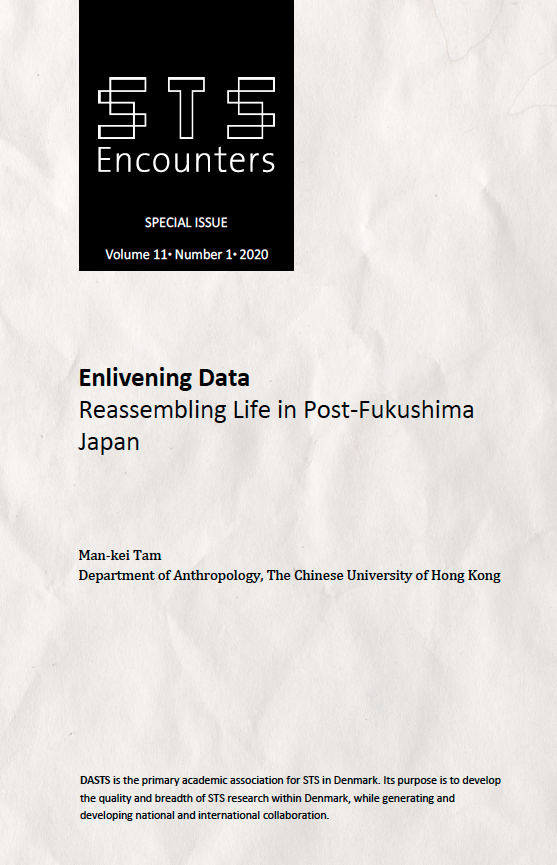Enlivening Data
Reassembling Life in Post-Fukushima Japan
DOI:
https://doi.org/10.7146/stse.v11i1.135281Keywords:
nuclear disaster, Fukushima, environmental governance, radiation, technology and citizenAbstract
This article is based on ethnographic research conducted in the wake of the Fukushima nuclear disaster in Japan in 2011. The paper analyses how the interplay between the state, the citizenry, and particular radiation technologies defined the shifting boundaries of safety after the fallout and its disruptions. Drawing on James Scott’s notion of legibility, I analyse the Japanese state’s deployment of dosimeters, maps, and monitoring posts, which generated myriad data that were translated into the legibility of radiation, whereby the enactment of new boundaries of safety and the remaking of the Japanese state became feasible. Previous studies of the Chernobyl and Fukushima disasters indicated that ordinary people, if not precisely victimized, have limited capacities to make their claims and confront powerful authorities. In Iitate, I trace citizens’ responses to incorporating accessible and affordable technologies that rendered the state’s boundaries of safety leaky, immanent, and continually renegotiable, whereby ordinary people are empowered to enact alternative ways of seeing and perceiving radiation. I use the notion of ‘enlivening’ to differentiate citizens’ data from those produced by the state and suggest how the environment has re-emerged as an experimental field generative of new relations between villagers’ lives and a diversity of things and organisms.

Downloads
Published
How to Cite
Issue
Section
License

This work is licensed under a Creative Commons Attribution-NonCommercial-ShareAlike 4.0 International License.
Starting with volume 15, articles published in STS Encounters are licensed under Attribution-NonCommercial-ShareAlike 4.0 International (CC BY-NC-SA 4.0). The editorial board may accept other Creative Commons licenses for individual articles, if required by funding bodies e.g. the European Research Council. Previous articles are not licensed under Creative Commons. In these volumes, all rights are reserved to the authors of the articles respectively.




